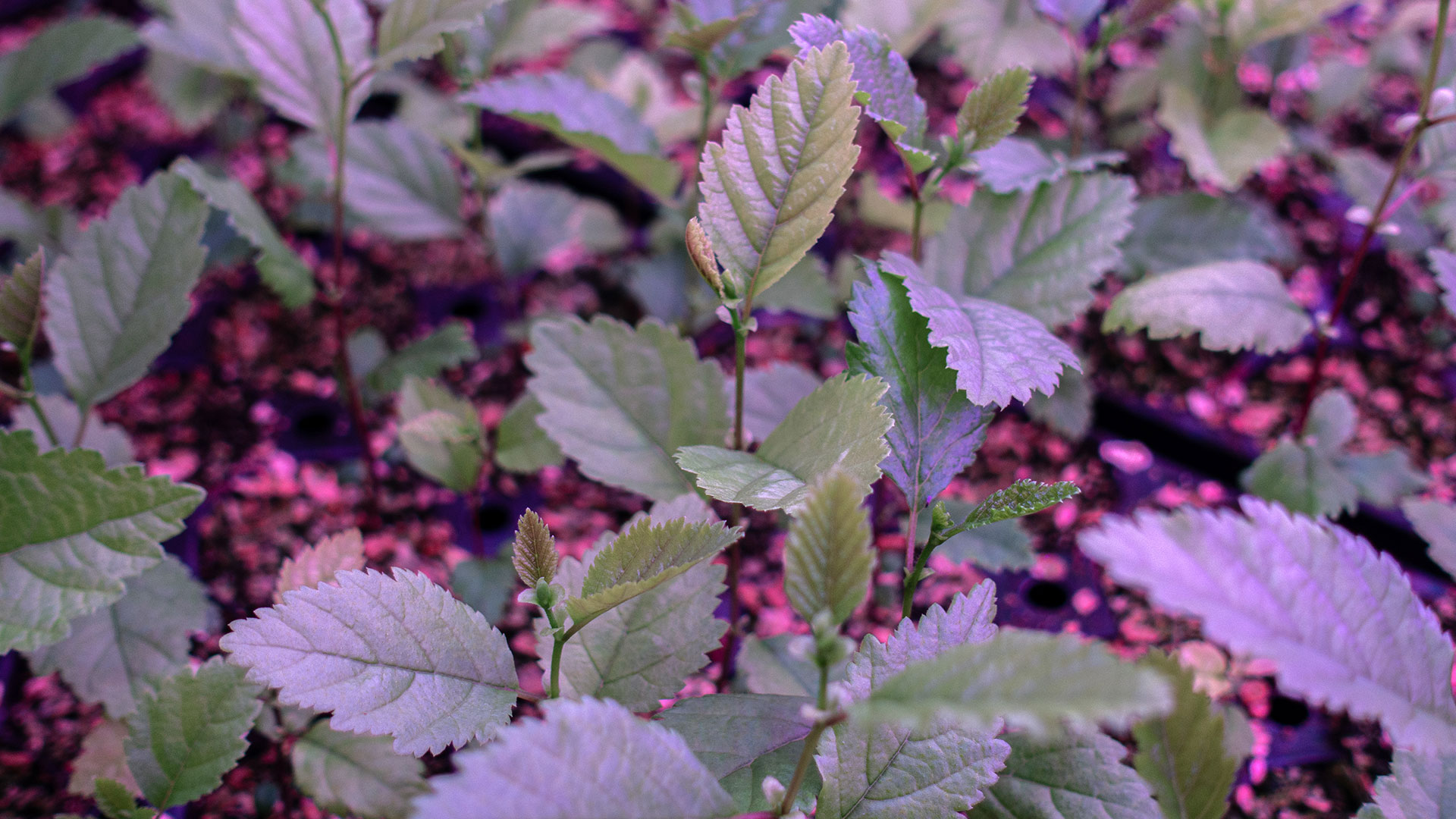Vertical farming gives growers a reliable way to produce high-quality plants all year round. It creates a stable environment that reduces risks linked to weather volatility, labour shortages, and the impact of pests and diseases. Certain crops perform particularly well in a vertical farm, and IGS technology can support you to grow them. Let’s look at which crops grow best in vertical farms and why a controlled environment delivers stronger, more predictable results.

What is vertical farming?
Vertical farming is a method of growing plants in vertically stacked layers. IGS technology achieves this through Total Controlled Environment Agriculture (TCEA). TCEA controls lighting, airflow, humidity, irrigation, and temperature to create consistent conditions for growing plants.
All of these factors help to create repeatable outcomes for a range of crops, enabling year-round growing, predictable yield, healthy, disease-free plants, and ultimately, strong commercial performance. This makes vertical farming ideal for leafy greens, herbs, starter plants, and high-value crops that benefit from uniform conditions.
What crops grow best in a vertical farm?
Growing crops from seed-to-harvest
Can leafy greens and herbs be grown in a vertical farm?
Yes. Leafy greens and herbs are among some of the most efficient commercial crops for vertical farming.
Suitable crops include:
- lettuce (seed-to-harvest and starter plants)
- basil
- pak choi
- kale
Leafy greens grown vertically require relatively little space, have a short growing cycle, and can be easily grown using our ebb-and-flood hydroponic system.
Can lettuce be grown from seed to harvest in a vertical farm?
Yes. Using IGS technology, growers can:
- produce lettuce year-round
- supply uniform crops for retailers
- run predictable cycles, regardless of external weather
- position part or entire production closer to market
- help lower reliance on imported produce
Lettuce can also be grown as starter plants, using a greenhouse or open field in tandem with vertical farming technology, supporting consistent supply and strong commercial performance.

Growing starter plants with vertical farming technology
Can tomato and strawberry starter plants be grown in a vertical farm?
Yes. Starter plants thrive in a controlled environment because early growth stages are highly sensitive to stress.
IGS vertical farms help growers achieve:
- uniform height and structure
- stronger early vigour
- protection from pests and diseases
- reliable, predictable transplant timing
- reduced reliance on third-party suppliers
Once established, these young plants can be moved to a greenhouse, polytunnel, or open field to complete their growth cycle.
We’ve achieved successful trials for a number of plants using this approach, namely:
- tomato starter plants
- strawberry starter plants
- lettuce starter plants
- tree seedlings
Growing starter plants using vertical farming technology reduces dependence on imported propagules, helping growers build local, resilient supply chains and grow uniform and disease-free crops.
Are fruiting crops grown to maturity in a vertical farm?
Not typically. Tall fruiting crops (such as tomatoes and strawberries) are best suited to a hybrid system. This involves:
- propagation in a vertical farm, making the plants themselves more resilient
- finishing the growth cycle in a greenhouse or open field
This model helps with transplant uniformity, faster growth cycles, and reduces early-stage losses.
Can tree seedlings be grown in a vertical farm?
Yes. Tree seedlings benefit significantly from controlled, stable early conditions.
Growing tree seedlings in using IGS’ vertical farming technology helps to achieve:
- higher survival rates
- protection from pests and disease
- faster early development
- predictable supply for forestry, reforestation, and commercial nurseries
Controlled environment growing allows for greater output, without additional land use – a key advantage for forestry and environmental projects.

Can medicinal or specialised crops be grown in a vertical farm?
Yes. Vertical farms are suited to high-value crops requiring tight controls over biosecurity and plant chemistry, such as those used for pharmaceutical purposes.
This supports:
- consistent production of specific compounds
- reduced contamination risk and enhanced biosecurity
- year-round, predictable supply
- full environmental traceability through a controlled growing environment
This works well for medicinal, nutraceutical, and research applications, opening up additional opportunities for operators.
Using vertical farming alongside more traditional methods
IGS Growth Towers can work in tandem alongside open-field and greenhouse operations as part of a hybrid growing approach. They support growers to:
- stabilise year-round supply
- reduce losses caused by extreme weather
- manage labour constraints
- reduce crop exposure to pests and disease
- increase propagation capacity
- shorten and localise supply chains
This strengthens overall production and makes operators more resilient, rather than replacing established methods. They can benefit from more established, traditional methods of growing, while reaping the benefits in consistency and predictability that a controlled growing environment brings.

Benefits of vertical farming for commercial crop production
Consistent, year-round output
TCEA removes seasonality. This supports crops with short cycles (leafy greens), as well as starter plants that need dependable early-stage growth (such as lettuce, tomatoes, strawberries, and tree seedlings).
Increased output per square metre
Vertically stacked layers unlock more growing area without expanding your physical footprint. An IGS Growth Tower with a 41 m² footprint can provide up to 520 m² of growing space, for example.
Reduced pest and disease risk
A fully controlled growing environment helps to protect plants from external pressures, such as pests and disease. Our systems do not use harmful chemicals, allowing growers to improve plant quality while reducing contamination and loss.
Responsible water and energy use
IGS farms reuse around 95% of water through a closed-loop system. This reduces total water demand, which works to support regions facing water scarcity.
Is vertical farming right for your operation?
Vertical farming is well suited to growers who want to:
- grow crops year-round
- produce seed-to-harvest crops, such as leafy greens and herbs
- grow starter plants for greenhouse or field production
- increase propagation capacity without expanding land use
- move away from imported young plants
- diversify crop output
- secure consistent supply for customers
- manage climate- or labour-related volatility
If these align with your needs, a vertical farm can strengthen your business model and increase predictability.
Who is IGS?
Intelligent Growth Solutions (IGS) is a technology company founded in Scotland in 2013. We combine engineering, plant science, and agronomical expertise to deliver vertical farming systems that support profitable, scalable production.
IGS’ Crop Research Centre, located near the James Hutton Institute near Dundee, develops growth recipes, tests new crops, and advances understanding of indoor plant science.
To explore how vertical farming could support your operation, speak to a member of our team.






.jpg)
